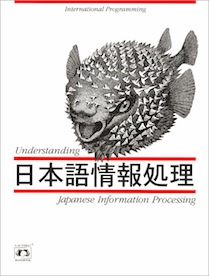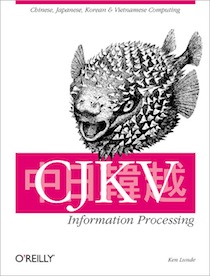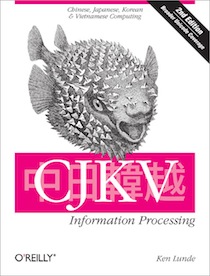The Type 42 Font Format: Humor & History
Although now part of history—thanks to OpenType—one of the legacy PostScript font formats that has some mystique surrounding it is Type 42, mainly because of the apparent significance of that number in a particular series of books. I wrote the following on page 379 of my latest book as a description: Type 42 fonts are actually TrueType fonts with a PostScript wrapper so that they can reside within PostScript printers, and act much like PostScript fonts. A TrueType rasterizer must be present on the PostScript device in order to use Type 42 fonts.
The full specification is still available.
Due to the nature of the three books I have written, Type 42 is mentioned, and with each subsequent book, more details about its history, in terms of selecting the number 42, are able to be revealed to the reader. This article chronicles the coverage of Type 42 in these three books, and while there is clearly some humor intended, there is also value in knowing the true history of this font format. What appears in this article are footnotes from these books, shown in their entirety, preserving their format (and any typos).

The following footnote appeared on page 136 in the now out-of-print Understanding Japanese Information Processing (O’Reilly Media, 1993):
It is rumored that 42 was chosen by an unidentified (Apple) employee who was being humorous. In the Hitchhiker series of books (by Douglas Adams, published by Pocket Books), a god-like computer named Deep Thought is asked to find the answer to the Ultimate Question of Life, the Universe, and Everything. After computing for thousands of years, this computer returns the answer 42.

A small number of years passed, during which time I actually read the Hitchhiker books, which led me to correct a factual error. I also came across the name of the person who coined Type 42, Kevin Andresen. These details were embodied in a significantly expanded version of the same footnote on page 280 in my next book, the also now out-of-print CJKV Information Processing (O’Reilly Media, 1999):
It has been rumored that 42 was chosen by an unidentified (Apple Computer) employee who was being humorous. In the The Hitch Hiker’s Guide to the Galaxy and its sequels (written by Douglas Adams, published by Pocket Books), a god-like computer named Deep Thought is asked to calculate the answer to the Ultimate Question of Life, the Universe, and Everything. After computing for seven and a half million years, Deep Thought returns the value 42.
Reality sets in. In a September 27, 1995 post to comp.fonts, Kevin Andresen revealed to the world that he was the person who chose the number 42. I quote:
I named it, and for you conspiracy theorists out there, it did not mean TrueType was the answer to Type 1! Maybe the real story later…
In a private email communication, Kevin conveyed the story to me:
My group back at Xerox had changed their workstation/server/printer naming theme from Mad Max to Hitch Hiker’s Guide just before I left—our main development printer was named “Forty-Two.” I picked 42 because I knew that Adobe couldn’t accidentally go there next, and as a wink and a nudge to my friends back in Rochester. It was only after Adobe and Apple resumed their business relationship that I heard the “conspiracy theory” about the answer to Type 1. By then, we had already released the spec to TrueType developers, so the name stuck.
Kevin also told me that he wrote an unimplemented specification for the disk-resident form of Type 42—similar to Type 4 fonts—called Type 44. He chose 44 because he had a cold at the time, and was guzzling Vicks Formula 44D. Kevin no longer works for Apple Computer.
As a footnote to this footnote, Douglas Adams had a few words to say about the significance of 42, from an email originally sent to Kevin:
Everybody tries to find significances for 42. In fact, it’s the other way around—many more significances have been created than previously existed. (Of course, the number that previously existed was zero—it was just a joke.)

Finally, I updated this footnote once again on page 380 in my latest book, CJKV Information Processing, Second Edition (O’Reilly Media, 2008):
It has been rumored that the number 42 was chosen by an unidentified (Apple) employee who was being humorous. In The Hitchhiker’s Guide to the Galaxy and its sequels (written by Douglas Adams and published by Pocket Books), a god-like computer named Deep Thought is asked to calculate the answer to the Ultimate Question of Life, the Universe, and Everything. After computing for seven and a half million years, Deep Thought returns the value 42.
Reality sets in. In a September 27, 1995 post to comp.fonts that I happened to spot, Kevin Andresen revealed to the world that he was the person who chose the number 42. I quote:
I named it, and for you conspiracy theorists out there, it did not mean TrueType was the answer to Type 1! Maybe the real story later….
In a private email communication, Kevin conveyed the details to me:
My group back at Xerox had changed their workstation/server/printer naming theme from Mad Max to Hitch Hiker’s Guide just before I left—our main development printer was named “Forty-Two.” I picked 42 because I knew that Adobe couldn’t accidentally go there next, and as a wink and a nudge to my friends back in Rochester. It was only after Adobe and Apple resumed their business relationship that I heard the “conspiracy theory” about the answer to Type 1. By then, we had already released the spec to TrueType developers, so the name stuck.
Kevin also told me that he wrote an unimplemented specification for the disk-resident form of Type 42—similar to Type 4 fonts—called Type 44. He chose 44 because he had a cold at the time, and was guzzling Vicks Formula 44D. Oh, and Kevin no longer works for Apple.
As a footnote to this footnote, Douglas Adams had a few words to say about the significance of 42, from an email originally sent to Kevin:
Everybody tries to find significances for 42. In fact, it’s the other way around—many more significances have been created than previously existed. (Of course, the number that previously existed was zero—it was just a joke.)
Sadly, Douglas Adams passed away on May 11, 2001 at the age of 49.
Perhaps on a somewhat brighter note, almost all of the second edition of this book was written while I was 42 years of age.
Well, there you have it. ☺